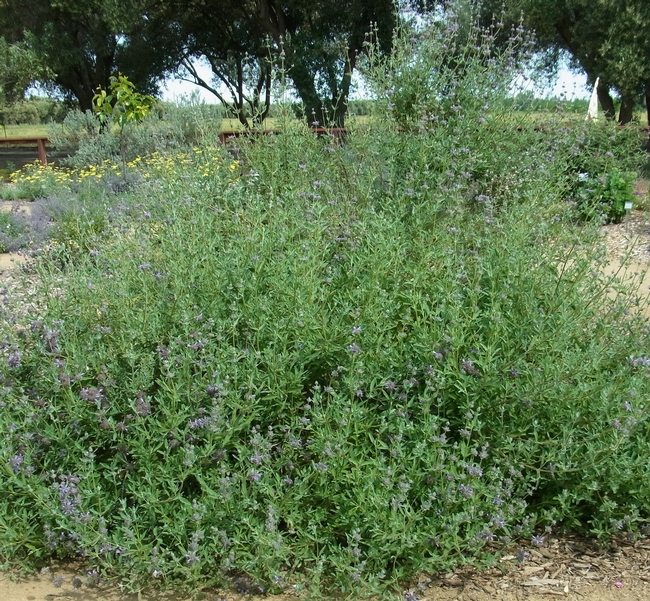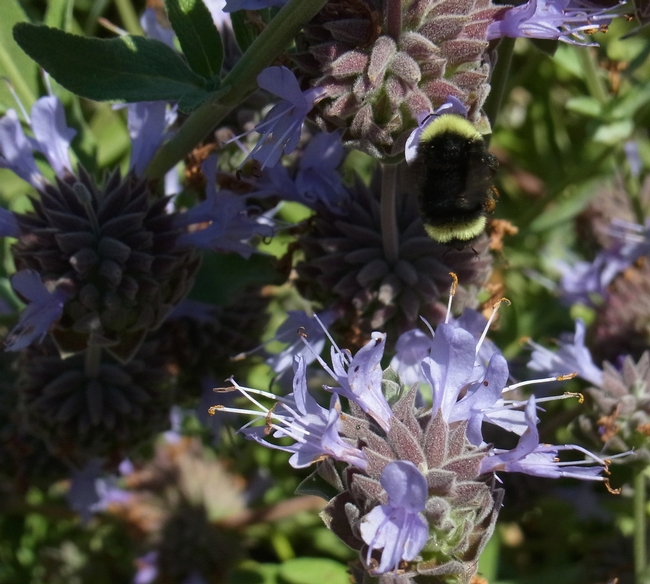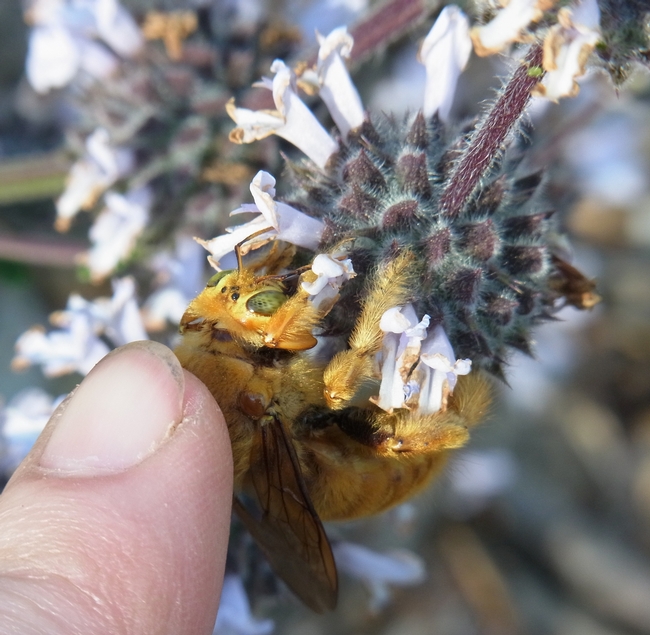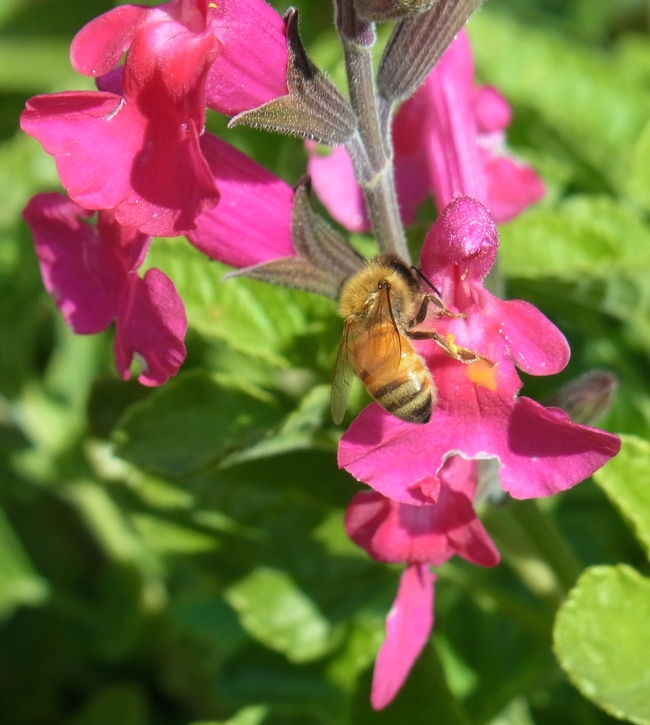As we move into the heat of the summer, few plants show their value as bee plants for hot, dry gardens better than the salvias. Known by both their common name, sage, and their genus name, salvia, we have a tremendous number of these plants in the Haven for good reason. No bee garden should be without a salvia!
For gardeners interested in learning more about this group, two books are recommended. Long-time salvia fans will be familiar with The New Book of Savias: Sages for Every Garden (2003) by Betsy Clebsch. Newly published is The Plant Lover's Guide to Salvias by Northern California nurseryman John Whittlesdy. This book updates gardeners on many of the new species and cultivars in the trade and has great color photographs, including some with bees.
Salvias in the Haven
Here is a sampling of the salvias planted in the Haven. A complete garden plant list is here. Salvias do best in full sun, but can take partial shade (although flowering will be reduced). They need well-drained soil and little water, except as noted below. Most do best when cut back hard in the fall (except for the winter-bloomers, which should be pruned after flowering).
Cleveland sage, Salvia clevelandii. This uniquely-scented plant is a favorite of both bee and human visitors to the garden. A California native, it has soft grey-green leaves and purple flowers that bloom from May until late summer. There are a number of cultivars and hybrids with other native sages, many of which are only available through specialty nurseries and plant sales. Two that are most commonly used in gardens are the cultivars ‘Allen Chickering' and ‘Winifred Gilman'. Both are becoming more common in garden centers as customers look for drought-tolerant plant options. ‘Allen Chickering' grows to about five feet tall and wide, while ‘Winifred Gilman' tops out at about three by three. ‘Winifred Gilman' also has the deepest purple flowers of the group.


Brandegee's sage, Salvia brandegii. One of my personal favorites, this California native blooms from January through May and intermittently the rest of the summer. It provides vital early-season forage and is a bee favorite. Textured leaves add to its interest. It reaches about three feet tall with a spread of at least twice that. The cultivar ‘Pacific Blue' has lavender flowers while the species has white flowers.

Hummingbird sage, Salvia spathacea. Pineapple-scented leaves and bright pink flowers make this California native salvia a standout in the garden. More tolerant than shade of most sages, this is a good choice for planting underneath native oaks that cannot have summer water. Unlike other sages, it spreads by underground rhizomes and will colonize a large area.
Autumn sage hybrids, Salvia greggii; Salvia greggii x microphylla; Salvia hybrida. I couldn't begin to do justice to the diverse members of this group in one blog post. A few of the best performers at the Haven are ‘Hot Lips' (red and white flowers); ‘Lipstick' (red flowers); ‘San Carlos Festival' (bright pink flowers); and the Heatwave series (several flower colors).

Bog sage, Salvia uliginosa. Unlike most sages, this one needs regular moisture and part shade. At the Haven we grow it near one of our bee waterers to provide this; I've also grown it as a container plant. Tall flower spikes with light blue flowers distinguish this bee favorite, which can spread vigorously with the right conditions.
